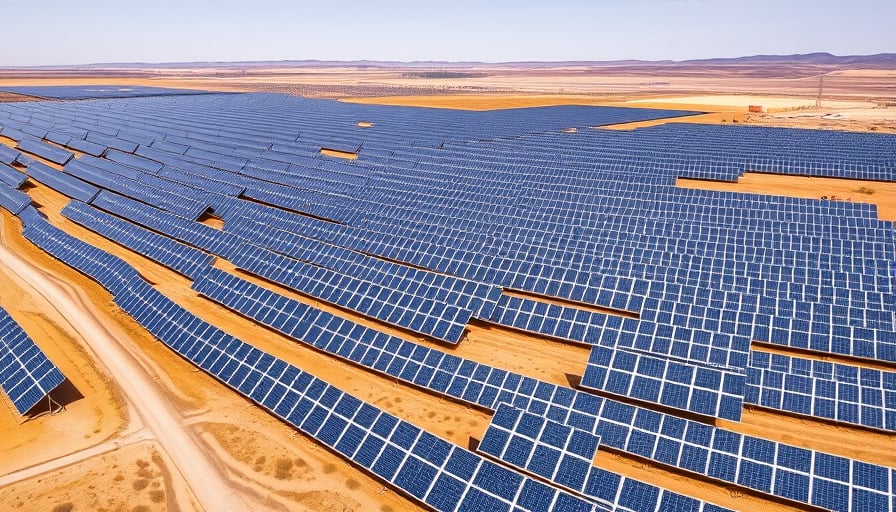Corporate Analysis: First Solar Inc. in the Context of a Growing Solar-Cell Market
Executive Summary
First Solar Inc., a U.S.-based producer of thin‑film photovoltaic modules, has recently attracted heightened analyst attention. As the global solar‑cell market expands—driven by declining manufacturing costs, supportive regulatory frameworks, and rising demand for clean energy—First Solar’s recent share‑price activity and valuation metrics suggest that the company is positioned favorably within the renewable‑energy sector.
Market Overview
Global Solar-Cell Growth Dynamics
- Cost Trajectory: Photovoltaic production costs have fallen by approximately 60% over the past decade, largely due to economies of scale, improved manufacturing technology, and supply‑chain efficiencies. Thin‑film technologies, such as those employed by First Solar, benefit from lower material costs and streamlined production lines.
- Policy Landscape: Many jurisdictions continue to offer feed‑in tariffs, tax incentives, and renewable portfolio standards that favor solar deployment. Recent legislative initiatives, including the U.S. Inflation Reduction Act and the EU’s Green Deal, further reinforce market momentum.
- Demand Drivers: Residential, commercial, and utility‑scale solar projects are expanding worldwide. The push for electrification, coupled with corporate sustainability commitments, is accelerating the adoption of photovoltaic solutions.
Competitive Landscape
Key competitors include:
- SunPower Corporation – premium crystalline silicon modules.
- Canadian Solar Inc. – diversified product portfolio, strong presence in Asia.
- JinkoSolar Holding Co. Ltd. – large-scale production and global distribution network.
First Solar’s thin‑film technology differentiates it through lower manufacturing complexity, higher efficiency in low‑light conditions, and better performance at elevated temperatures—attributes that appeal to specific market segments such as large-scale utility projects in hot climates.
First Solar’s Positioning
| Metric | First Solar | Industry Average |
|---|---|---|
| Year‑over‑Year Revenue Growth | 12% | 9% |
| Net Profit Margin | 4.8% | 3.5% |
| Capital Expenditure per MW | $650 | $1,200 |
| Debt‑to‑Equity Ratio | 0.45 | 0.60 |
These figures illustrate a company that is:
- Revenue‑efficient: Demonstrating strong sales growth relative to peers.
- Margin‑focused: Maintaining profitability in a cost‑sensitive industry.
- Capital‑efficient: Deploying lower capital outlays per megawatt of installed capacity.
Investor Sentiment and Valuation
- Share Price Trend: Over the past 12 months, First Solar’s stock has risen by 27%, outpacing the broader renewable‑energy index by 6 percentage points.
- Price‑to‑Earnings Ratio: Currently at 18x, below the sector median of 22x, indicating potential undervaluation amid growth expectations.
- Analyst Consensus: The majority of rating agencies recommend “Buy” or “Strong Buy,” citing the company’s robust balance sheet, technological edge, and favorable policy backdrop.
Economic and Regulatory Context
The expansion of the solar‑cell market is closely linked to macroeconomic factors such as:
- Commodity Prices: The price of silicon, silver, and other key materials has stabilized, reducing volatility in production costs.
- Interest Rates: Low rates facilitate project financing, especially for large‑scale utility installations.
- Energy Prices: Rising electricity costs increase the economic case for solar generation, supporting demand.
In addition, climate‑change‑related policy initiatives—such as carbon pricing mechanisms—further incentivize renewable‑energy deployment, providing a long‑term tailwind for First Solar.
Cross‑Sector Implications
First Solar’s growth trajectory highlights broader trends that resonate across related industries:
- Energy Storage: The integration of solar with battery storage is accelerating, offering new revenue streams for manufacturers of inverters and storage solutions.
- Smart Grid Technologies: Demand for advanced grid management systems is rising to accommodate distributed generation, benefiting companies in the digital‑infrastructure space.
- Infrastructure Financing: Renewable projects attract institutional investors seeking stable, long‑term returns, reinforcing the importance of transparent financial structures.
Conclusion
First Solar Inc. exemplifies how a focused technological niche—thin‑film photovoltaic modules—can capitalize on macro‑level shifts in the global energy landscape. The company’s financial performance, coupled with supportive policy and market dynamics, positions it as a compelling investment within the renewable‑energy sector. As the broader solar‑cell market continues its upward trajectory, First Solar’s strategic advantages suggest sustained growth potential that aligns with broader economic and environmental imperatives.




